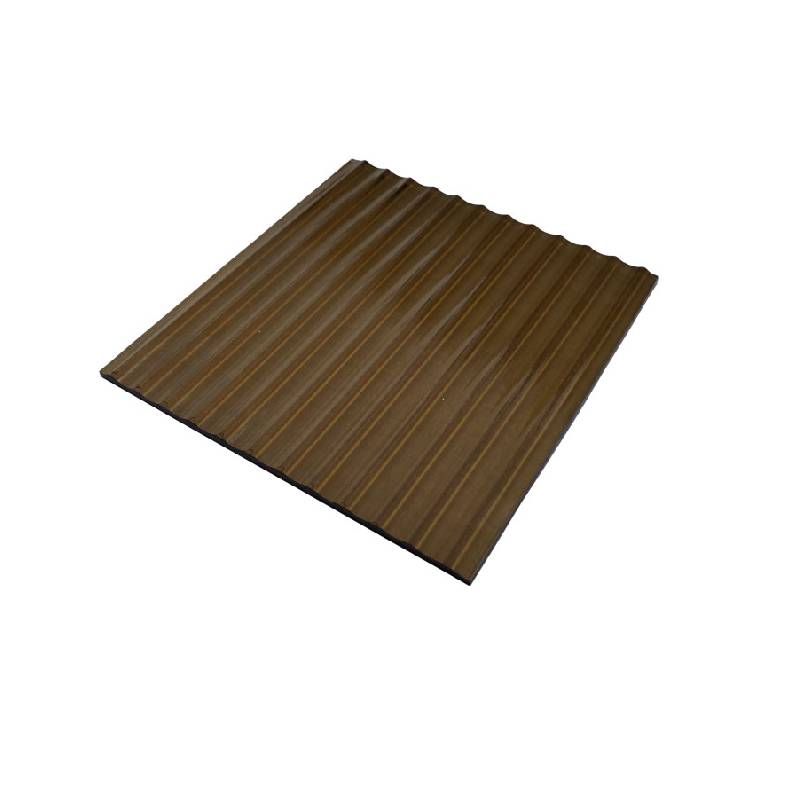Understanding the Variety of Tempered Glass Features, Types, and Applications
Tempered glass, also known as toughened glass, has become a material of choice in various industries due to its enhanced strength and safety features. This article explores the different varieties of tempered glass, their manufacturing process, and their myriad applications, highlighting why they have become indispensable in modern construction and design.
What is Tempered Glass?
Tempered glass is produced through a specific thermal process that involves heating the glass to over 600 degrees Celsius and then rapidly cooling it. This process increases the glass's strength compared to regular glass, making it less susceptible to breakage under mechanical stress and thermal shock. When broken, tempered glass shatters into small, blunt pieces rather than sharp shards, significantly reducing the risk of injury.
Types of Tempered Glass
1. Standard Tempered Glass This is the most common type used in residential and commercial applications. It is available in various thicknesses and sizes and is often used for windows, doors, and partitions.
2. Laminated Tempered Glass This variety combines two layers of tempered glass with a plastic interlayer, often PVB (Polyvinyl Butyral). This laminated structure provides additional safety benefits because, even when shattered, the glass remains adhered to the interlayer, preventing it from collapsing and offering enhanced sound insulation.
3. Tinted Tempered Glass Available in different shades, tinted tempered glass provides aesthetic appeal while reducing glare and blocking harmful UV rays. It's frequently used in facades and skylights in commercial buildings where controlling light and heat gain is essential.
4. Low-E Tempered Glass This variety is coated with a thin layer of metallic or ceramic materials that reflect infrared light while allowing visible light to pass through. Low-E tempered glass is energy-efficient, keeping interiors warmer in winter and cooler in summer, making it a popular choice for energy-efficient buildings.
5. Patterned Tempered Glass This type has a textured surface that offers privacy while still allowing light to pass through. It is commonly used in bathroom windows and room dividers.
6. Curved Tempered Glass This type is crafted into curved shapes through heating and bending. Curved tempered glass is frequently used in modern architectural designs, such as facades and railings, offering unique aesthetics and structural integrity.
tempered glass variety
Manufacturing Process
The production of tempered glass follows a precise process. First, the raw glass is cut and shaped according to specifications. Once the glass is prepped, it is heated in a tempering furnace to over 600 degrees Celsius. After reaching the desired temperature, it is rapidly cooled using air jets in a process called quenching. This rapid cooling creates compressive stresses on the surface while keeping tensile stresses in the center, resulting in increased overall strength.
Contemporary methods have introduced computerized control systems to optimize the heating and cooling processes, ensuring even temperature distribution and minimal distortion.
Applications of Tempered Glass
Tempers glass finds its applications across a variety of sectors
- Architecture and Construction Its strength and safety features make it ideal for windows, facades, and storefronts, enhancing building aesthetics and energy efficiency.
- Automotive Tempered glass is widely used in car windows due to its safety characteristics, offering protection to passengers while enhancing the vehicle's overall design.
- Interior Design From shower doors to glass tables and partitions, tempered glass provides elegance and durability in residential and commercial interiors.
- Furniture Many modern furniture designs incorporate tempered glass for tables, shelves, and display cases, combining aesthetics with safety.
Conclusion
Tempered glass has established itself as a versatile material with a wide range of varieties to suit numerous applications. Its superior strength, safety features, and aesthetic appeal make it an essential choice for architects, designers, and manufacturers alike. Understanding the different types of tempered glass can help consumers and industry professionals make informed decisions tailored to their specific needs, ensuring both functionality and style in their projects. As technology progresses and demands evolve, tempered glass will undoubtedly continue to play a pivotal role in shaping modern architecture and design.
 Afrikaans
Afrikaans  Albanian
Albanian  Amharic
Amharic  Arabic
Arabic  Armenian
Armenian  Azerbaijani
Azerbaijani  Basque
Basque  Belarusian
Belarusian  Bengali
Bengali  Bosnian
Bosnian  Bulgarian
Bulgarian  Catalan
Catalan  Cebuano
Cebuano  Corsican
Corsican  Croatian
Croatian  Czech
Czech  Danish
Danish  Dutch
Dutch  English
English  Esperanto
Esperanto  Estonian
Estonian  Finnish
Finnish  French
French  Frisian
Frisian  Galician
Galician  Georgian
Georgian  German
German  Greek
Greek  Gujarati
Gujarati  Haitian Creole
Haitian Creole  hausa
hausa  hawaiian
hawaiian  Hebrew
Hebrew  Hindi
Hindi  Miao
Miao  Hungarian
Hungarian  Icelandic
Icelandic  igbo
igbo  Indonesian
Indonesian  irish
irish  Italian
Italian  Japanese
Japanese  Javanese
Javanese  Kannada
Kannada  kazakh
kazakh  Khmer
Khmer  Rwandese
Rwandese  Korean
Korean  Kurdish
Kurdish  Kyrgyz
Kyrgyz  Lao
Lao  Latin
Latin  Latvian
Latvian  Lithuanian
Lithuanian  Luxembourgish
Luxembourgish  Macedonian
Macedonian  Malgashi
Malgashi  Malay
Malay  Malayalam
Malayalam  Maltese
Maltese  Maori
Maori  Marathi
Marathi  Mongolian
Mongolian  Myanmar
Myanmar  Nepali
Nepali  Norwegian
Norwegian  Norwegian
Norwegian  Occitan
Occitan  Pashto
Pashto  Persian
Persian  Polish
Polish  Portuguese
Portuguese  Punjabi
Punjabi  Romanian
Romanian  Russian
Russian  Samoan
Samoan  Scottish Gaelic
Scottish Gaelic  Serbian
Serbian  Sesotho
Sesotho  Shona
Shona  Sindhi
Sindhi  Sinhala
Sinhala  Slovak
Slovak  Slovenian
Slovenian  Somali
Somali  Spanish
Spanish  Sundanese
Sundanese  Swahili
Swahili  Swedish
Swedish  Tagalog
Tagalog  Tajik
Tajik  Tamil
Tamil  Tatar
Tatar  Telugu
Telugu  Thai
Thai  Turkish
Turkish  Turkmen
Turkmen  Ukrainian
Ukrainian  Urdu
Urdu  Uighur
Uighur  Uzbek
Uzbek  Vietnamese
Vietnamese  Welsh
Welsh  Bantu
Bantu  Yiddish
Yiddish  Yoruba
Yoruba  Zulu
Zulu 

